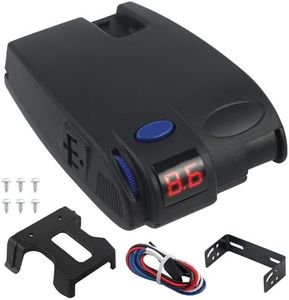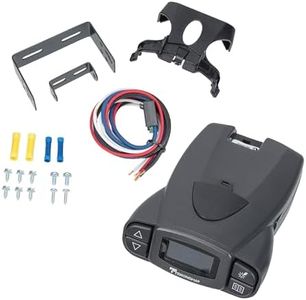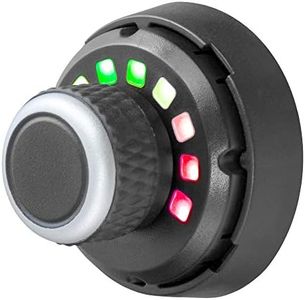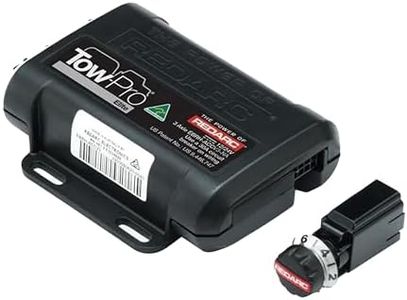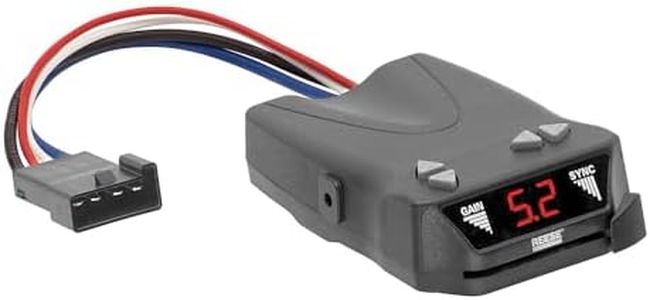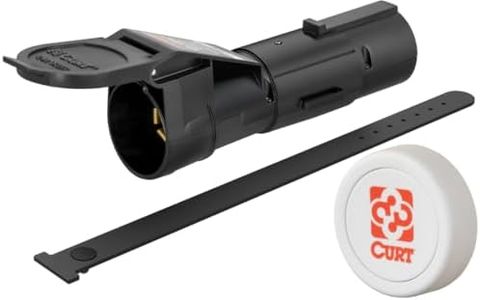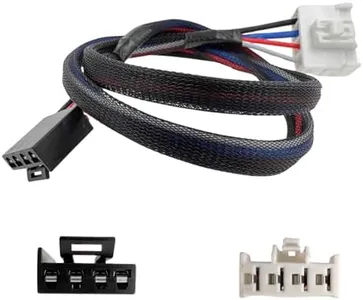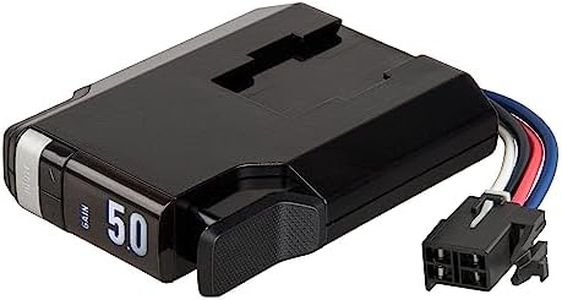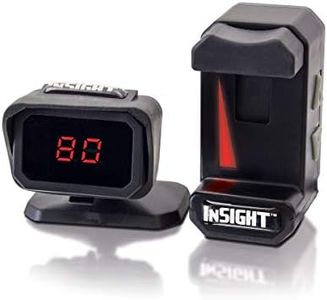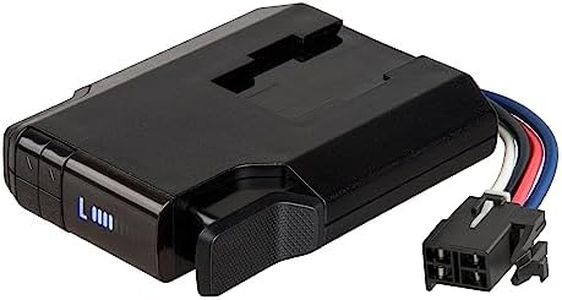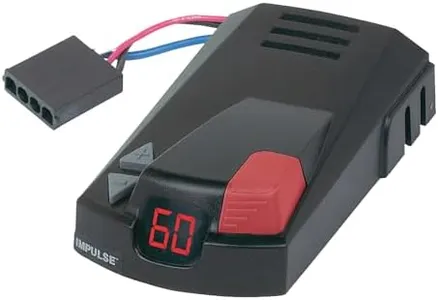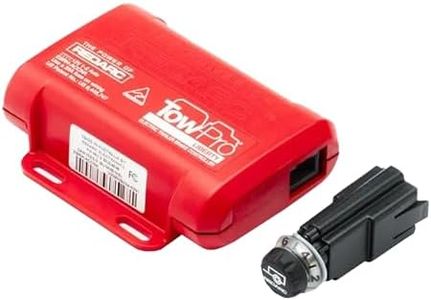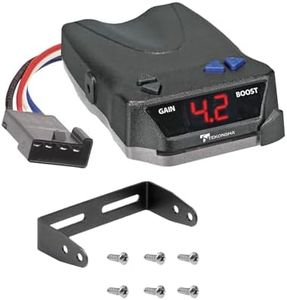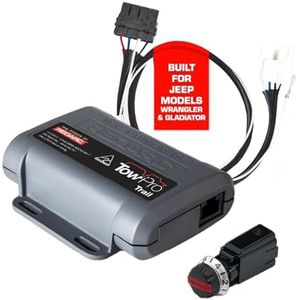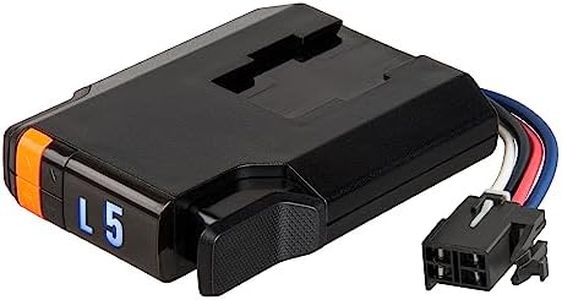10 Best Trailer Brake Controllers 2025 in the United States
Our technology thoroughly searches through the online shopping world, reviewing hundreds of sites. We then process and analyze this information, updating in real-time to bring you the latest top-rated products. This way, you always get the best and most current options available.

Our Top Picks
Winner
Tekonsha 90195 Prodigy P3 Proportional Brake Controller for Trailers with 1-4 Axles, Compatible with Ford, GM, Chevy, Dodge, RAM, Toyota, Jeep. Wiring harness sold separately.
Most important from
6527 reviews
The Tekonsha 90195 Prodigy P3 is a proportional electric brake controller designed for trailers with 1 to 4 axles, supporting from 2 up to 8 brakes. It automatically matches your trailer’s braking power to how hard you press your vehicle’s brakes, which helps provide smoother and safer stopping. This model works with many popular vehicles, including Ford, GM, Chevy, Dodge, RAM, Toyota, and Jeep, making it a flexible choice for various tow setups.
One useful feature is its clear, front-facing color LCD screen, which displays settings and alerts in real-time, helping you keep track of how the system is performing. It also lets you save up to five different braking presets, so if you tow multiple trailers, switching between setups is quick and simple. The controller offers a boost option to increase braking power when hauling heavier loads, and manual control is available if you need to apply the trailer brakes independently. However, the wiring harness needed for installation is sold separately, which means added cost and effort if you don’t already have the right connectors.
The unit is compact and lightweight, and it has a strong reputation with high customer ratings. For those seeking a dependable and adjustable brake controller with good vehicle compatibility and useful features for various trailers, the Tekonsha Prodigy P3 represents a reliable choice, especially for those who want both automatic and manual braking options.
Most important from
6527 reviews
CURT 51170 Spectrum Original Equipment Style, Integrated Electric Trailer Brake Controller, Proportional
Most important from
746 reviews
The CURT 51170 Spectrum trailer brake controller is designed for those looking for an efficient and integrated solution for managing trailer brakes. One of its standout features is its factory-like design, which allows for seamless installation onto your vehicle's dash. This helps maintain a clean look while giving you easy access to the control knob for monitoring brake settings. It's compatible with various braking systems, including low-volt, PWM, ABS, and electric over hydraulic setups, making it versatile for different types of trailers.
The hidden main module is another plus, as it can be mounted out of sight, preventing any clutter on your dashboard while ensuring reliable brake operation. Its intelligent braking feature, powered by a triple-axis accelerometer, automatically adjusts braking power based on the vehicle's motion, providing a smoother and safer towing experience, especially on inclines.
One of the key benefits is the easy adjustment capability. This controller can be tailored to suit different vehicles and trailer loads, and the manual override feature allows for quick adjustments whenever necessary. There are a few drawbacks to consider, including potentially challenging installation for those unfamiliar with automotive wiring. Additionally, being a compact device, it might not have extensive features compared to more advanced models in the market.
Most important from
746 reviews
REDARC Tow-Pro Elite Electric Trailer Brake Controller Kit, Universal Fit for 1 to 3 Axle Trucks, SUVs, Dual Braking Modes, Plug and Play Install, 12V/24V Compatible to Tow RV, Camper, Trailer, Boat
Most important from
477 reviews
The REDARC Tow-Pro Elite Electric Brake Controller stands out with its dual braking modes: proportional and user-controlled. This makes it versatile for different towing situations. The proportional mode uses inertia sensing, which is great for smooth and safe highway braking. The user-controlled mode lets you manually adjust the braking force, offering flexibility based on your needs.
Active Calibration is another highlight, ensuring optimal performance regardless of the vehicle or trailer setup. This controller is compact and easy to install, requiring minimal dashboard space, which is a plus for those who prefer a clutter-free look.
Its best-selling rank in automotive and trailer brake controls also showcases its popularity and trust among users. If you need a reliable and adaptable trailer brake controller, the REDARC Tow-Pro Elite is worth considering.
Most important from
477 reviews
Buying Guide for the Best Trailer Brake Controllers
Choosing the right trailer brake controller is essential for ensuring safe and efficient towing. A trailer brake controller helps manage the braking system of your trailer, providing better control and stability. When selecting a brake controller, it's important to consider various specifications to find the best fit for your towing needs. Here are some key specs to consider and how to navigate them.FAQ
Most Popular Categories Right Now
